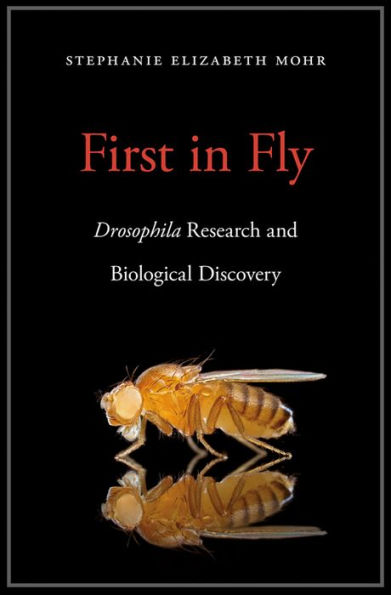A single species of fly, Drosophila melanogaster, has been the subject of scientific research for more than one hundred years. Why does this tiny insect merit such intense scrutiny?
Drosophila’s importance as a research organism began with its short life cycle, ability to reproduce in large numbers, and easy-to-see mutant phenotypes. Over time, laboratory investigation revealed surprising similarities between flies and other animals at the level of genes, gene networks, cell interactions, physiology, immunity, and behavior. Like humans, flies learn and remember, fight microbial infection, and slow down as they age. Scientists use Drosophila to investigate complex biological activities in a simple but intact living system. Fly research provides answers to some of the most challenging questions in biology and biomedicine, including how cells transmit signals and form ordered structures, how we can interpret the wealth of human genome data now available, and how we can develop effective treatments for cancer, diabetes, and neurodegenerative diseases.
Written by a leader in the Drosophila research community, First in Fly celebrates key insights uncovered by investigators using this model organism. Stephanie Elizabeth Mohr draws on these “first in fly” findings to introduce fundamental biological concepts gained over the last century and explore how research in the common fruit fly has expanded our understanding of human health and disease.
A single species of fly, Drosophila melanogaster, has been the subject of scientific research for more than one hundred years. Why does this tiny insect merit such intense scrutiny?
Drosophila’s importance as a research organism began with its short life cycle, ability to reproduce in large numbers, and easy-to-see mutant phenotypes. Over time, laboratory investigation revealed surprising similarities between flies and other animals at the level of genes, gene networks, cell interactions, physiology, immunity, and behavior. Like humans, flies learn and remember, fight microbial infection, and slow down as they age. Scientists use Drosophila to investigate complex biological activities in a simple but intact living system. Fly research provides answers to some of the most challenging questions in biology and biomedicine, including how cells transmit signals and form ordered structures, how we can interpret the wealth of human genome data now available, and how we can develop effective treatments for cancer, diabetes, and neurodegenerative diseases.
Written by a leader in the Drosophila research community, First in Fly celebrates key insights uncovered by investigators using this model organism. Stephanie Elizabeth Mohr draws on these “first in fly” findings to introduce fundamental biological concepts gained over the last century and explore how research in the common fruit fly has expanded our understanding of human health and disease.

First in Fly: Drosophila Research and Biological Discovery
270
First in Fly: Drosophila Research and Biological Discovery
270Related collections and offers

Product Details
| ISBN-13: | 9780674984738 |
|---|---|
| Publisher: | Harvard University Press |
| Publication date: | 03/09/2018 |
| Sold by: | Barnes & Noble |
| Format: | eBook |
| Pages: | 270 |
| File size: | 7 MB |
